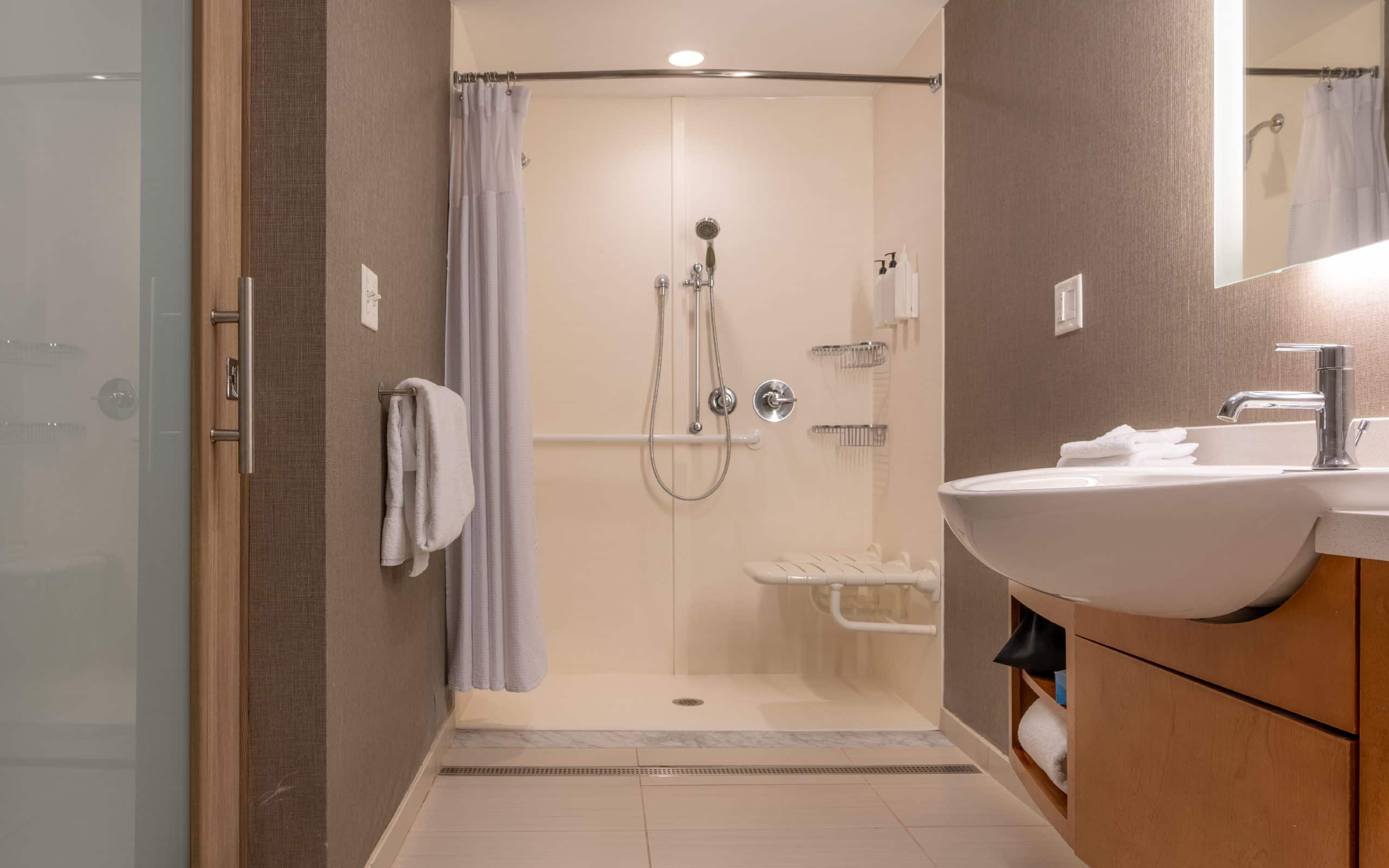For many older adults, using a conventional shower can be difficult, dangerous, or even impossible. Fortunately, these days you can find a variety of options for wheelchair-accessible showers that can help make bathing easier and safer.
What Is a Wheelchair-Accessible Shower?
A wheelchair-accessible shower provides easy access for people who use wheelchairs or have limited mobility. These shower designs typically include features such as low thresholds, grab bars, and benches that make it easier for those with physical limitations to enter and use the shower.
Wheelchair-accessible showers help ensure safety while also providing greater independence, convenience, and peace of mind for those who use them.
Before installing a wheelchair-accessible shower, it’s important to understand what’s entailed in choosing, purchasing, and installing one. Let’s take a look at the steps you’ll need to take to install a wheelchair-accessible shower in your home.
Step 1: Identify Your Needs
The first step is determining which type of shower configuration will best meet your needs. There are a few different types of wheelchair-accessible showers, including roll-in showers, transfer showers, and combination showers. Each type has its own set of features that may be beneficial depending on your individual situation.
When shopping for a wheelchair-accessible shower, you’ll want to consider a variety of factors including:
• Type of threshold (low or no threshold)
• The size and shape of the shower base
• The need for and placement of grab bars
• Bench need and placement
• Availability of accessories such as hand-held showers or adjustable heads
• Type of valve system and water control handles
Step 2: Select an Appropriate Wheelchair-Accessible Shower Solution
When planning your wheelchair-accessible shower, you’ll need to decide on the layout of your shower space. This should include measurements for the base and walls as well as any additional features such as grab bars or benches. You should make sure there is enough room for a person in a wheelchair to maneuver around the space safely and easily. And if you need help in the shower, think about who helps you and how to make sure there is enough room for them to assist.
Being accessibility equipment, wheelchair-accessible showers need to comply with local building codes and adhere to specific construction and quality standards. Although not required for private homes, you can refer to ADA (Americans with Disabilities Act) requirements for guidance and best practices.
Your wheelchair-accessible shower, first and foremost, should be designed with safety in mind. This means that all surfaces should be slip-resistant, there are not barriers to using your wheelchair, the bathroom has adequate lighting, and any grab bars are securely and strategically installed.
Step 3: Choose the Right Installation Professional
Installing a wheelchair-accessible shower requires the expertise of an experienced professional. Find someone who is qualified and experienced in this type of work and understands how to meet accessibility requirements. Check their references and make sure they are professionally certified for plumbing and other contractor work.
The right professional installer will know how to avoid common mistakes such as not taking measurements correctly, not following local building codes or standards, and not properly installing grab bars or other safety features. They should also be knowledgeable enough to provide suggestions for customization and keeping costs low.
Learn more on how Havenside can assist with accessible home modifications here.
Step 4: Take Care of Your Wheelchair-Accessible Shower
Once your wheelchair-accessible shower is installed, it’s essential to take care of it properly so that it continues to provide safe and comfortable use over time. This includes regularly checking for signs of wear or damage and promptly addressing any issues that arise.
When cleaning your shower, use non-abrasive cleaning products that won’t damage the surfaces or wear off any non-slip textures. We recommend cleaning at least once per week.
If your mobility needs change over time, you can make adjustments to your shower so that it continues to meet your unique needs.
Havenside Can Help
If you’d like additional guidance for choosing and installing a wheelchair-accessible shower, contact the team at Havenside. We work to help older adults find home modifications that enable them to remain in their homes safely and independently.

